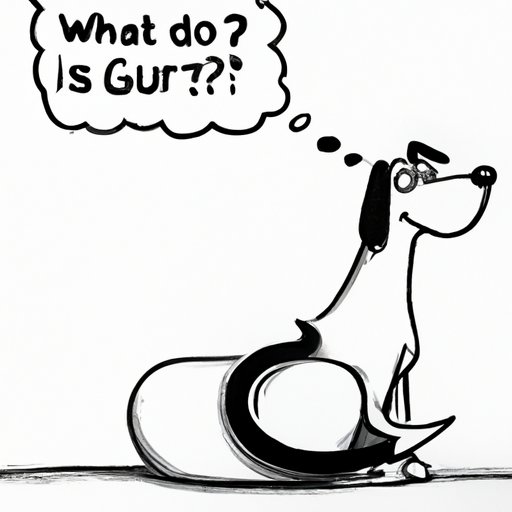As a caregiver to a beloved canine, you’ve probably spent countless hours observing your pet’s behavior. One aspect that might have caught your attention is their tail. It wags, it droops, and sometimes, it even curls up. But what does it mean when a dog’s tail is curled up?
In this comprehensive exploration, we delve into the intricate language of a dog’s tail and its corresponding behaviors. You’ll discover the hidden meanings behind these tail movements and learn how to interpret them to better understand your furry friend.
Table of Contents
- Understanding the Language of the Tail
- The Significance of a Curled Up Tail
- Breed-Specific Tail Positions
- The Role of Emotion in Tail Position
- Health Indicators: When a Curled Tail calls for a Vet Visit
- Frequently Asked Questions
Understanding the Language of the Tail
A dog’s tail is a significant communication tool. It signals a variety of emotions, intentions, and health conditions. While most people associate a wagging tail with a happy dog, the reality is a lot more complex. The speed, direction, and position of the tail all contribute to the message being conveyed.
In fact, according to the American Kennel Club, a dog’s tail can indicate everything from excitement and happiness to fear and aggression.
The Significance of a Curled Up Tail
So, let’s address the question at hand: what does it mean when a dog’s tail is curled up?
Generally, when a dog curls its tail upward, it’s a sign of confidence and alertness. Your dog may be intensely focused on something or demonstrating dominance. However, it’s crucial to consider the tail’s position in conjunction with other body language cues like ear position, facial expression, and overall posture.
For instance, if the tail is curled up and the dog’s body is relaxed, they’re probably just content and alert. If the tail is rigidly curled over the back and the dog seems tense, they could be signaling aggression or fear.
Breed-Specific Tail Positions
Certain breeds have naturally curled tails. For example, the Basenji, Alaskan Malamute, and Pomeranian typically hold their tails in a curled position over their backs. This is a breed characteristic and not necessarily indicative of their emotional state.
This article on OneTopDog provides a comprehensive list of dog breeds with naturally curled tails.
The Role of Emotion in Tail Position
Emotions play a significant role in dictating tail positions. A dog’s tail will drop between its legs when it’s scared or anxious. In contrast, a raised tail signifies interest and attention, while a neutral, relaxed tail indicates a calm and comfortable dog.
It’s important to note that extreme tail curling (over the back) accompanied by other aggressive body language can signal fear, stress, or aggression. Always approach dogs carefully, even if their tail curling seems playful at first glance. This guide on OneTopDog offers some valuable insights into understanding dog body language.
Health Indicators: When a Curled Tail calls for a Vet Visit
While tail curling is usually a behavioral trait, it can also indicate health problems, particularly if it’s a sudden change in a dog that normally doesn’t curl its tail. Pain around the base of the tail, anal gland issues, or spinal problems could cause a dog to hold its tail in an unusual position.
If your dog’s tail remains curled for an extended period, it’s essential to consult a vet. This post provides some tips on when you should consider a vet visit.
Frequently Asked Questions
- Why is my dog’s tail always curled up?
-
If your dog is a breed that naturally has a curled tail, it’s normal for the tail to be curled up most of the time. If it’s not breed-specific and is a sudden change, it could be a sign of a medical issue or emotional distress.
-
Does a curled tail mean my dog is happy?
-
Not necessarily. While a curled tail can indicate alertness and confidence, it can also signal stress or aggression when paired with other body language cues.
-
What should I do if my dog’s tail is curled up and they seem uncomfortable?
- If your dog seems uncomfortable, it’s best to consult a vet. They can help rule out any potential health concerns.
In conclusion, understanding your dog’s tail movements can significantly enhance your ability to communicate with your pet. Remember, these tail positions are a form of language. So, next time your dog’s tail curls up, pay attention to what they might be trying to tell you.



